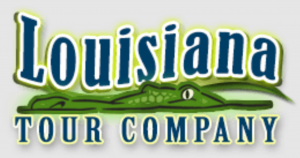Cajun Connections: How Wetlands Shaped Louisiana Culture
They’re living, working environments where people have survived and thrived, building families, music, food, and stories all along the water”
MARRERO, LA, UNITED STATES, June 20, 2025 /EINPresswire.com/ -- The wetlands of Louisiana are more than a backdrop—they are the foundation of a culture built on resilience, resourcefulness, and deep connection to place. With their winding bayous, cypress-lined waterways, and rich biodiversity, the wetlands have shaped life in South Louisiana for centuries. The cultural imprint of these swamps can be found in fishing traditions, folklore, cuisine, and community structures that remain central to Cajun identity today.— Milton Walker Jr.
The earliest settlements in South Louisiana were established near water not just by convenience, but by necessity. The wetlands provided transportation routes, food sources, and shelter from storms. Over time, small communities emerged along the bayous, giving rise to a way of life that blended practicality with tradition. Pirogues and flatboats became the main mode of travel, and homes were built raised above the ground to adapt to seasonal flooding.
Fishing in the swamps and marshes remains a defining aspect of life in Louisiana’s wetland regions. Generations of families have earned their living through crabbing, crawfishing, shrimping, and gill netting. These techniques, often passed down orally, are part of an informal education system rooted in hands-on experience and respect for the environment. The connection between Cajun families and the wetlands is built on sustainability and stewardship—knowing when to fish, when to rest the waters, and how to maintain balance with the changing seasons.
Milton Walker Jr., owner of Louisiana Tour Company, recognizes the cultural significance of the wetlands in the state’s history. “The swamps aren’t just scenery,” Walker said. “They’re living, working environments where people have survived and thrived, building families, music, food, and stories all along the water.”
Cajun folklore has deep roots in swamp country. Tales of the Rougarou, a shape-shifting creature said to haunt the bayou on full moons, continue to be told around campfires and at kitchen tables. These stories, drawn from French and Acadian oral traditions, serve not only to entertain but also to instill values, warnings, and historical memory.
Storytelling in Cajun culture often weaves together humor, fear, and respect for nature. Gators, snakes, and sudden changes in weather are more than natural events—they become characters in a shared narrative that reinforces the unpredictable and awe-inspiring nature of swamp life. These tales reflect a blend of European, Native American, and African influences, showing how the region’s cultural fabric was shaped by its geographic isolation and ethnic diversity.
Foodways also reflect the role of wetlands in shaping daily life. Dishes like gumbo, étouffée, and jambalaya originate from the need to use local ingredients—wild game, fish, shellfish, and whatever herbs and vegetables could be grown or gathered in the region. Cooking in Cajun households often begins with what’s been caught or harvested that day, turning necessity into heritage.
Wetlands have also influenced regional architecture. Raised cottages, shotgun homes, and narrow wood-planked cabins were designed to accommodate both the environment and the extended families who lived in close quarters. Shutters weren’t decorative—they kept rain and flying insects at bay. Tin roofs weren’t just stylish—they were practical during long rainy seasons. The built environment reflects adaptation to the rhythms of the swamp.
Music, another hallmark of Cajun identity, owes its roots to wetland life as well. Fiddle tunes, accordions, and washboards were played at fais do-dos and backyard dances held near the water’s edge. These gatherings became a way to share news, strengthen family bonds, and escape the hard work of daily life in the marsh. Songs often told stories of love, loss, migration, and joy—all themes grounded in a people shaped by their proximity to nature and by the unpredictability of life in the wetlands.
Today, that same swamp-based culture faces new challenges. Coastal erosion, saltwater intrusion, and climate change threaten both the physical landscape and the traditions tied to it. As the wetlands recede, so too do the spaces where cultural transmission naturally occurs—on fishing trips, during festivals, or in the quiet of early morning boat rides.
Efforts to preserve and share this culture remain active across the region. Tours of the wetlands provide not just sightseeing opportunities, but also education on the significance of these ecosystems to the region’s past, present, and future. Local guides, many with family ties to the land and water, share firsthand knowledge of traditions that continue to evolve alongside environmental conditions.
Louisiana Tour Company continues to highlight these connections through its offerings in the New Orleans area. Whether observing wildlife, exploring historic routes, or engaging with local storytellers, guests experience more than a ride through the swamp—they encounter a living culture defined by adaptation, pride, and memory.
The wetlands shaped more than just the physical environment—they shaped a people. And those people, through food, music, storytelling, and tradition, continue to define what it means to live in Louisiana. In every boat wake, every fiddle note, and every steaming pot of gumbo, the wetlands speak. The culture listens. And the story goes on.
Morgan Thomas
Rhino Digital, LLC
+1 504-875-5036
email us here
Visit us on social media:
Facebook
Legal Disclaimer:
EIN Presswire provides this news content "as is" without warranty of any kind. We do not accept any responsibility or liability for the accuracy, content, images, videos, licenses, completeness, legality, or reliability of the information contained in this article. If you have any complaints or copyright issues related to this article, kindly contact the author above.


